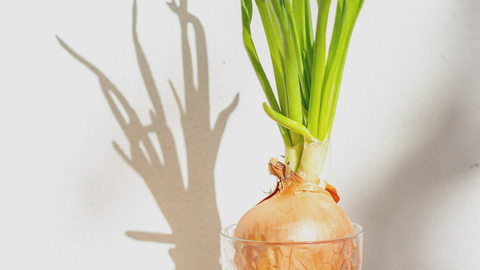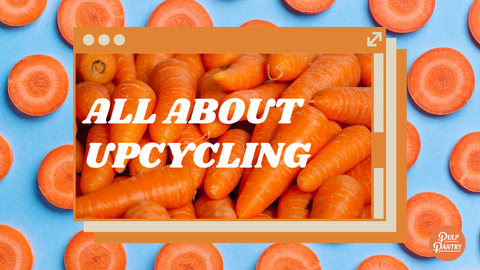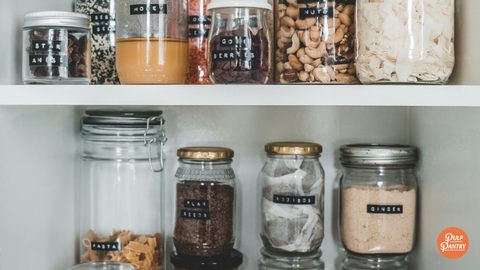
Starting with WWI, Americans were urged to grow their own food supply with gardens at home — and with 20 million at-home gardens, we the people produced about 40 percent of the nation’s fresh vegetables (NY Times). In those days, resilience and self-sufficiency were the most valuable traits to build.
More and more, we're noticing that people are turning to their own spaces, whether outdoor or indoors, to start growing fresh vegetables. And they're finding unique ways to upcycle materials to do it! We turned to social media to find some of our favorite examples of people building resilience with creative ways to grow produce at home.

1. Sprouting from Home
Beans, Grains, Legumes, Nuts and Seeds (we love mung beans and alfalfa!) (via @snowpeasophiesprout)
- Use a clean jar to soak seeds in water overnight, filled halfway up the jar (they're going to expand!). Cover the jar with a cloth and elastic band so that the seeds can breathe.
- In the morning, rinse the seeds in fresh water then drain the excess water.
- Rinse the seeds twice a day (in the morning and at night) draining excess water.
- A few days later, you should see that seeds have germinated and grown sprouts. Now's time to enjoy! Store them in the fridge in a container with holes in the lid to prevent moulding.
Flax and chia seeds (or any type of gelatinous seed) (via @the_smile_enthusiast)
- use 3 layers (strong enough to withstand water) of coffee filter as a grow medium
Sprouting in a Mason Jar (use for any seeds - alfalfa, broccoli, etc) (via @wellnessmama)

via @globalwakeup
2. Using Scraps to Re-Grow Vegetables Indoors
You can regrow your vegetables from scraps!
- Try with beetroots, carrots, spring onions, celery and more.
For odds and ends like onion ends, carrot tops, beet tops, place the veggie root-side down on a dish with a small layer (about an inch) of water.
Remember that carryout you had a few nights ago? Use your to-go containers as sprouting trays.
For spring onions and celery ends, place the root side in a mason jar with a small layer of water (enough to cover the roots).
Place the mason jar/ saucer on a sunny window and change the water every 2-3 days.
3. Upcycling Materials to Plant Seedlings

via @globalwakeup on Instagram.
You can use upcycled, biodegradable materials in your house to plant seedlings, which can then be planted directly into the soil.
Some of the things we've seen people using:
- Eggshells
- Toilet Paper Rolls
With these at-home activities, people are finding benefits far beyond the fresh food they're growing. People tell stories of the hope and joy they feel when watching their seeds sprout - truthfully, it's one of the most magical moments to see nature doing its thing.
What are you looking forward to growing next? Tag us and share your creations @pulppantry.

About Pulp Pantry:
Pulp Pantry turns overlooked resources like upcycled vegetable juice pulp into wholesome everyday snacks that make it convenient and delicious to eat more servings of vegetables and fiber.
Our newly launched Pulp Chips are vegetable-based, tortilla style chips made from fresh, upcycled vegetables as the first ingredient. Pulp Chips are a craveable better-for-you, better-for-the-planet snack with up to a full day's serving of fiber in each bag.
Try all of our four delicious flavors: Barbecue, Jalapeño Lime, Classic Sea Salt, Salt n' Vinegar.





